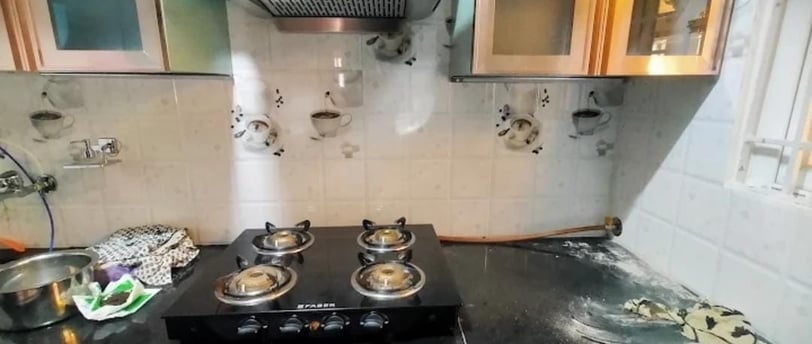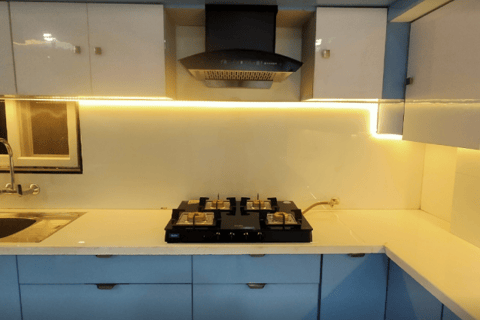"How to Make Your Home Gas Pipeline Efficient"
An efficient home gas pipeline system can save you money, reduce energy consumption, and enhance safety.
11/15/20243 min read


An efficient home gas pipeline system can save you money, reduce energy consumption, and enhance safety. Copper gas pipelines are known for their durability, flexibility, and ability to withstand high temperatures and pressure, making them an excellent choice for homeowners. However, to truly get the most out of a copper gas pipeline installation, proper installation and ongoing maintenance are essential. Here, we’ll cover strategies to improve the efficiency of your gas pipeline and ensure it performs optimally for years to come.
Benefits of an Efficient Copper Gas Pipeline Installation
Copper gas pipelines have unique properties that contribute to their popularity in residential gas systems. When installed correctly, copper offers:
Longevity: Copper is corrosion-resistant and can last for decades with minimal maintenance.
Flexibility: Copper can handle high-pressure environments, making it safe and reliable.
Consistent Gas Flow: Copper’s smooth interior reduces friction, allowing for a steady and efficient gas flow.
Achieving maximum efficiency in your copper gas pipeline installation will keep your home comfortable while potentially lowering your energy bills.
1. Schedule Routine Inspections and Maintenance
One of the best ways to maintain an efficient gas pipeline is through regular inspections. These allow technicians to identify and address issues before they affect the pipeline’s performance. During an inspection, a professional can check for signs of leaks, corrosion, or damage. In particular:
Annual Inspections: Have a licensed technician inspect your copper gas pipeline installation at least once a year to catch any early signs of wear or leaks.
Seasonal Checks: Changes in temperature can affect gas pipelines, especially in areas prone to freezing. A quick check in winter and spring ensures that seasonal shifts haven’t impacted efficiency.
2. Prevent Corrosion with Protective Measures
While copper is corrosion-resistant, certain environmental factors, like moisture or exposure to harsh chemicals, can still impact it over time. To protect your copper gas pipeline installation:
Install Protective Coatings: A layer of protective coating around your copper pipes can act as a barrier against moisture and external damage.
Ensure Proper Ventilation: Avoid moisture build-up around the gas lines by ensuring good airflow, especially if the pipeline runs through enclosed spaces.
Regular Cleaning: Dust and debris can accumulate on exposed pipelines. Gently wiping down pipes can prevent debris build-up that might lead to corrosion.
These simple steps will help maintain the pipeline’s condition and maximize its efficiency.
3. Optimize Pipeline Path and Layout
The way your gas pipeline is installed can greatly affect its efficiency. The shorter and more direct the pipeline route, the less pressure is needed to deliver gas throughout your home. For the best results:
Choose a Direct Route: When planning the installation, work with your provider to find the shortest and most direct path to reduce gas travel time and pressure needs.
Avoid Sharp Bends: Sharp turns and bends create resistance in the pipeline, causing it to work harder to deliver gas. If possible, design a straight pipeline layout.
Minimize Connections: Fewer connection points reduce the risk of leaks and maintain optimal pressure.
Efficient layout design is a key factor in maximizing the performance of your copper gas pipeline installation.
4. Insulate Exposed Pipelines
For gas pipelines exposed to outdoor conditions or in uninsulated spaces, adding insulation can help maintain efficient gas flow, especially in colder climates. Insulation reduces temperature-related pressure changes and ensures smooth gas delivery, preventing condensation buildup that could affect the pipeline.
Use Pipe Insulation Foam: Wrapping pipes with foam insulation is a cost-effective way to protect them from temperature variations.
Protect Outdoor Lines: If any parts of your gas line are exposed outdoors, consider installing a weatherproof cover to guard against extreme temperatures and moisture.
5. Invest in Quality Installation Services
A professional and high-quality copper gas pipeline installation is the foundation of efficiency. Choose a certified installation service with expertise in copper pipelines. Professionals can help you choose the right copper grade for your needs and ensure proper fitting and sealing techniques. Look for providers who offer warranties or guarantees on their work to secure long-term efficiency and safety.
6. Educate Household Members on Gas Safety
Proper usage is a crucial factor in maintaining gas efficiency. Educate everyone in your household on the following:
Avoid Unnecessary Gas Usage: Encourage efficient usage of gas appliances and turn off gas lines when they’re not in use.
Know Warning Signs: Teach family members how to recognize gas leaks or unusual smells and what steps to take in emergencies.
Check Appliances: Regularly check gas appliances for signs of wear, as inefficient appliances can strain your gas pipeline.
Good usage habits are essential to maximizing the benefits of your copper gas pipeline installation and minimizing potential issues.
7. Consider Upgrading Old Components
If you have an older gas pipeline system, upgrading components like valves, fittings, or sections of pipe to newer, high-efficiency options can improve overall performance. Modern copper pipeline fittings, for instance, are often more durable and leak-resistant than older designs.
Replace Old Valves: Faulty or outdated valves can reduce efficiency by causing leaks or flow issues.
Upgrade Connectors: Newer fittings often provide tighter seals and reduce the chance of gas loss.
Assess for Repairs: Regular maintenance can identify weak points in your system that may benefit from a quick upgrade.


Contact US Today:
Email: info@vaultgaspipeline.site
Phone:
+91 8522 09 2525
+91 95155 92020


Quick Links:
Services
Our Process
Why Choose us
Contact us
Our Services:
Gas Pipeline Installation
Gas Pipeline Maintenance
